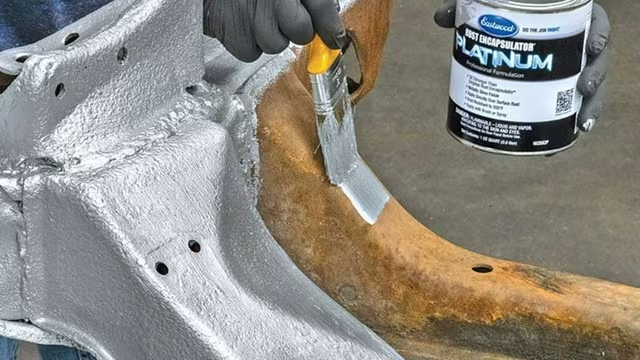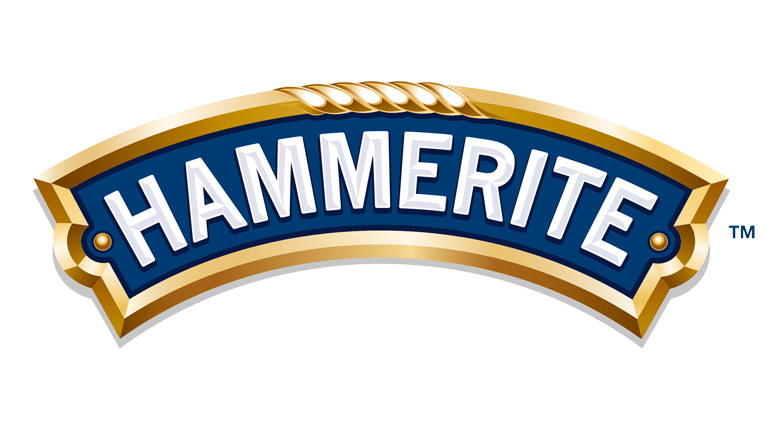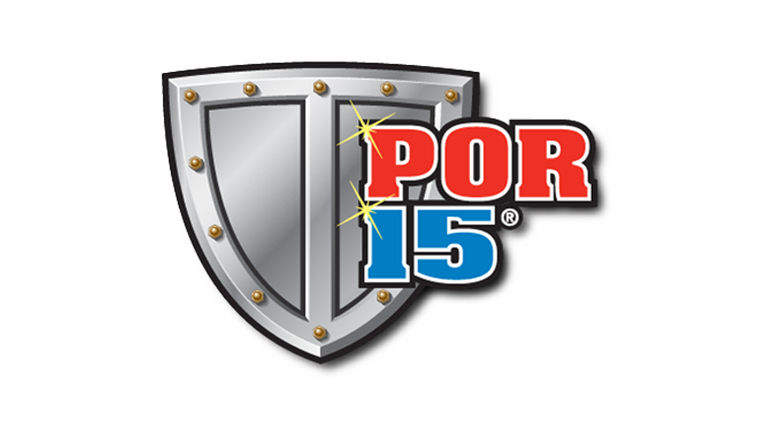Rust Encapsulators: Complete Guide & Product Reviews
Table of Contents
Rust encapsulators provide a powerful solution for sealing existing rust and preventing its spread. This comprehensive guide explores how these specialized coatings work, reviews the top products available in the UK market, and provides expert application advice for achieving maximum durability.
Introduction to Rust Encapsulators
Rust encapsulators represent one of the most effective approaches to dealing with established rust on vehicles, especially in challenging environments like the UK where the combination of high humidity, coastal salt exposure, and winter road treatments creates ideal conditions for corrosion. Unlike rust converters that chemically transform rust, encapsulators work by creating an impermeable barrier that isolates existing rust from the oxygen and moisture it needs to continue spreading.
These specialized coatings have revolutionized rust treatment by offering a practical alternative to complete rust removal in situations where mechanical removal would be impractical, too time-consuming, or potentially damaging to the underlying metal. By effectively "locking in" existing rust while providing a durable protective surface, encapsulators have become essential tools in both restorative work and preventative maintenance.

How Rust Encapsulators Work
Understanding the science behind rust encapsulators helps explain their remarkable effectiveness at stopping corrosion in its tracks. These advanced coatings employ multiple mechanisms to isolate rust from the elements while creating an exceptionally durable protective layer. Though formulations vary between manufacturers, most quality encapsulators share certain fundamental principles that allow them to provide long-term protection against further corrosion.
The Science of Encapsulation
Rust encapsulators operate on a different principle than rust converters. Instead of chemically changing the nature of the rust, they physically isolate it from the oxygen and moisture necessary for the corrosion process to continue. This isolation effectively stops the electrochemical reactions that drive rust formation, even if some rust remains present beneath the coating. The best encapsulators create a virtually impermeable barrier with excellent adhesion to both clean metal and rust.
- Moisture barrier - Creates an impermeable shield that prevents water from reaching the rust
- Oxygen isolation - Blocks oxygen access, halting the oxidation process
- Chemical inhibitors - Many formulations contain corrosion inhibitors for additional protection
- High adhesion - Forms a strong bond to both rusty and clean metal surfaces
- Self-leveling properties - Flows into pits and irregularities for complete coverage
Types of Encapsulating Formulations
Rust encapsulators come in several different chemical formulations, each with distinct characteristics that make them suitable for specific applications. The choice between these different types depends on factors such as the application environment, required durability, temperature resistance, and whether the area will be visible or hidden. Understanding these different formulations helps in selecting the most appropriate product for your particular rust treatment needs.
- Polyurethane-based - Extremely hard, chemical-resistant finish (e.g., POR-15)
- Epoxy-based - Excellent adhesion and durability (e.g., Rustbuster Epoxy Mastic)
- Water-based acrylics - Lower VOCs, easier cleanup, moderate durability
- Solvent-based synthetics - Fast drying, good penetration, strong odor
- Rubber-modified coatings - More flexible, good for areas with movement or vibration
Technical Insight
Moisture-cured polyurethane encapsulators like POR-15 actually use atmospheric moisture as a catalyst for curing, yet create a finish that's completely waterproof. This seemingly contradictory property is what makes them so effective - they cure thoroughly even in high-humidity environments (common in the UK) yet form a barrier that moisture cannot penetrate once cured.
Rust Encapsulators vs. Rust Converters
One of the most common points of confusion for vehicle owners is understanding the difference between rust encapsulators and rust converters, and knowing which to choose for a particular situation. Though both product types address rust issues, they work in fundamentally different ways and are designed for different scenarios. Understanding these differences is essential for selecting the most appropriate solution for your specific rust problem.
Key Differences
Rust encapsulators and converters represent two distinct approaches to rust treatment, and each has specific advantages and limitations. While converters chemically alter rust into a different compound, encapsulators physically seal the rust without changing its chemical nature. This fundamental difference affects everything from application requirements to long-term performance characteristics in different environments.
| Characteristic | Rust Converters | Rust Encapsulators |
|---|---|---|
| Working Principle | Chemically transforms rust into a stable compound | Physically seals rust from oxygen and moisture |
| Appearance Change | Typically changes rust to black or dark gray | Coats rust with layer of protective finish |
| Durability | Moderate; usually requires topcoating | High; many can serve as a standalone finish |
| Surface Preparation | Minimal; works directly on rust | Moderate; loose rust must be removed |
| Best For | Light surface rust, hard-to-reach areas | Established rust, structural components |
| Application Difficulty | Easier; more forgiving application | Moderate; requires more careful preparation |
| UK Price Range | £8-25 per litre | £20-60 per litre |
When to Choose an Encapsulator
While both product types have their place in rust treatment, encapsulators are particularly well-suited for certain scenarios where their specific characteristics provide advantages over converters. Understanding these situations helps you make the right choice for your particular rust issue, ensuring the most effective long-term solution. Rust encapsulators are generally the better choice when:
- Dealing with established, stubborn rust that cannot be completely removed
- Treating structural components where maximum durability is essential
- Working in high-stress areas subject to impacts, abrasion, or chemicals
- Areas where a topcoat may be difficult to apply later
- When a one-step solution is preferred over a multi-step treatment process
- In cases where rust is extensive but component replacement is impractical
- For long-term protection where accessibility for future maintenance is limited
Combined Approach
In many cases, particularly for severe or long-established rust, a combined approach using both a converter and an encapsulator provides the most comprehensive treatment. This two-step method leverages the advantages of both product types to ensure maximum effectiveness. When using this approach, it's important to ensure compatibility between the products and to follow the correct sequence for application.
- Clean and prepare the rusted surface by removing loose scale and contaminants
- Apply rust converter to chemically stabilize the remaining rust
- Allow complete conversion and follow manufacturer's instructions for curing
- Apply rust encapsulator over the converted surface for superior long-term protection
- Apply topcoat if necessary for UV protection or cosmetic reasons
Top UK Rust Encapsulator Products
The UK market offers several high-quality rust encapsulators that have proven particularly effective in Britain's challenging climate. These products vary in formulation, application methods, and specific strengths, but all provide excellent rust-stopping capabilities when properly applied. The following reviews highlight the most respected and reliable rust encapsulator products available to UK consumers.
POR-15 Rust Preventive Coating
Although not marketed as an encapsulator, POR-15 rust preventative is widely regarded as the gold standard of rust prevention. POR-15 has built a legendary reputation among automotive enthusiasts and professionals for its exceptional durability and effectiveness. The name stands for "Paint Over Rust," reflecting its ability to be applied directly to properly prepared rusty surfaces. Available through specialist suppliers like Frost.co.uk, POR-15 represents a premium solution for serious rust issues.
Key Features:
- Moisture-cured polyurethane - Forms an exceptionally hard, non-porous coating
- Extraordinary hardness - Cured coating is harder than most factory finishes
- Excellent chemical resistance - Withstands fuels, oils, and most chemicals
- Non-porous finish - Completely seals out moisture
- Self-leveling formula - Flows into pits and irregular surfaces
- Three-step system - Complete prep, treatment, and protection solution
- Available in multiple colors - Black, silver, gray, and clear options
POR-15 is particularly suited for treating structural components, chassis parts, floor pans, and other areas where maximum durability is essential. Its exceptional hardness makes it ideal for areas exposed to stone chips and abrasion. Note that POR-15 requires proper surface preparation and should be topcoated if exposed to UV light.
Rustbuster Epoxy Mastic 121
A professional-grade, UK-developed epoxy coating that offers exceptional adhesion to both rusty and clean surfaces. Rustbuster has built a strong reputation among British restoration specialists for products specifically formulated to address the challenges of the UK climate. Their Epoxy Mastic 121 is a two-part system that provides industrial-grade protection.
Key Features:
- Two-part epoxy formulation - Chemical cure creates strong, durable finish
- High-build capability - Can be applied in thicker coats than many competitors
- Excellent edge retention - Adheres well to corners and edges
- Contains zinc phosphate - Active corrosion inhibitor for additional protection
- UK-formulated - Developed specifically for British conditions
- Available in various colors - Can be color-matched to requirements
- Professional-grade durability - Used by restoration specialists throughout the UK
Rustbuster Epoxy Mastic excels in restoration projects and commercial vehicle applications where its high-build properties and excellent edge coverage are particularly valuable. The product offers an excellent balance of flexibility and hardness, making it suitable for areas subject to vibration and movement.
Eastwood Rust Encapsulator
A versatile, user-friendly rust encapsulator that has gained popularity in the UK for its ease of application and reliable performance. Eastwood products are designed with the DIY enthusiast in mind while still delivering professional-quality results. Their Rust Encapsulator is available in both aerosol and brush-on formats from retailers including Frost.co.uk.
Key Features:
- Convenient aerosol option - Ideal for hard-to-reach areas
- Fast drying formula - Reduces project time and dust contamination
- Good flexibility - Resists cracking and peeling with panel flex
- Sandable finish - Can be sanded for smooth topcoating
- Available in multiple colors - Black, silver, red, and clear options
- Moderate cost - Good balance of performance and value
- DIY-friendly application - Less demanding preparation requirements
Eastwood Rust Encapsulator is particularly well-suited for DIY restoration projects and maintenance applications where ease of use is valued. The aerosol format makes it excellent for treating frame rails, inside body panels, and other hard-to-access areas where brush application would be challenging.
Hammerite Direct to Rust Metal Paint
A widely available and user-friendly product that combines rust encapsulation with decorative finishing. Hammerite is one of the UK's most recognized names in metal protection, with products available in virtually every hardware store and automotive retailer. Their Direct to Rust formula offers a convenient one-step solution for treating and coating rusty surfaces.
Key Features:
- All-in-one formula - Primes, encapsulates, and finishes in one product
- No primer needed - Applies directly to prepared rusty surfaces
- Extensive color range - Available in numerous colors and finishes
- Widely available - Sold in most hardware and automotive stores
- Multiple finish options - Smooth, hammered, or satin textures
- User-friendly application - Brush, roller, or spray options
- Quick drying - Touch dry in 1-2 hours, recoatable in 4 hours
Hammerite Direct to Rust is particularly suitable for visible components and cosmetic applications where appearance matters alongside rust protection. Its convenience and wide availability make it popular for gates, garden furniture, and exterior vehicle components like bumper brackets and suspension parts.
Buzzweld Rust Seal
A UK-developed specialist coating designed specifically for automotive applications. Buzzweld products have gained a strong following among British car enthusiasts for their excellent performance in the UK climate. Their Rust Seal product offers professional-grade protection at a reasonable price point.
Key Features:
- Fish-oil enhanced formula - Provides additional rust-stopping properties
- Good penetration - Works into pitted surfaces and tight seams
- Flexible finish - Accommodates panel movement without cracking
- Compatible with body fillers - Can be applied over or under most fillers
- UK-formulated - Developed for British automotive applications
- Good build properties - Can be applied in substantial thickness
- Value-oriented - Offers good performance at moderate price point
Buzzweld Rust Seal is particularly effective for treating areas like wheel arches, floor pans, and inner panels where its penetrating properties and flexibility provide excellent protection. It's become especially popular in the UK classic car restoration community for its balance of performance and value.





Rust Encapsulator Application Guide
Proper application is crucial for achieving the best results with rust encapsulators. While specific instructions vary between products, the following general guidelines will help ensure successful application and maximum durability. Taking the time to carefully follow these steps will significantly improve both the immediate effectiveness and long-term performance of your rust encapsulation treatment.
Surface Preparation
Thorough preparation is the foundation of successful rust encapsulation. While encapsulators are designed to work over rust, they still require proper surface preparation to achieve optimal adhesion and performance. Rushing or skipping preparation steps is a common cause of premature failure with these products. The time invested in proper preparation will be repaid many times over in the longevity and effectiveness of the treatment.
- Remove loose rust and scale - Use wire brushes, scrapers, or abrasive tools to remove all loose rust
- Thoroughly clean the surface - Remove dirt, grease, oil, and contaminants using appropriate degreasers
- Address existing coatings - Remove loose or flaking paint and feather edges of sound paint
- Create a profile - Lightly scuff glossy surfaces to improve adhesion
- Final cleaning - Remove all dust and residue with suitable solvent or cleaner
- Ensure surface is dry - Unless using a moisture-cured product that specifies otherwise
- Mask adjacent areas - Protect surfaces that should not receive coating
POR-15 System Insight
For maximum effectiveness with POR-15, Frost.co.uk recommends their complete three-step system: First use Marine Clean to degrease, then Metal Ready to etch and prepare the surface, and finally apply the POR-15 coating. This systematic approach creates ideal conditions for adhesion and provides superior long-term protection compared to using the coating alone.
Application Techniques
How you apply the encapsulator can significantly impact its effectiveness and durability. Different products may require specific application methods, and various situations may call for different approaches. Whether using a brush, spray, or roller, ensuring complete coverage and proper film thickness is essential for successful rust encapsulation. Always read and follow the manufacturer's specific application instructions for best results.
- Brush application:
- Use high-quality natural or synthetic bristle brushes
- Apply with full, even strokes for consistent coverage
- Work the product into crevices and pitted areas
- Maintain a wet edge to avoid lap marks
- Roller application:
- Use short-nap rollers for smooth surfaces
- Apply in overlapping passes for even coverage
- Use brush for edges and detailed areas
- Consider foam rollers for very smooth finish
- Spray application:
- Use recommended tip size and pressure settings
- Apply in light, even coats to avoid runs
- Maintain consistent distance from surface
- Use proper respiratory protection
Application Conditions
Environmental conditions during application and curing can significantly affect the performance of rust encapsulators. In the UK's variable climate, paying attention to these factors is particularly important for achieving optimal results. Whenever possible, try to schedule your application when conditions are favorable, or make adjustments to create suitable conditions in your work area.
- Temperature - Most products perform best between 10-25°C (50-77°F)
- Humidity - Follow product specifications (moisture-cured products may prefer higher humidity)
- Ventilation - Ensure adequate airflow while avoiding excessive dust
- Protection from elements - Shield from rain during application and curing
- Substrate temperature - Surface should be above dew point to prevent condensation
UK Application Tip
In the UK's often damp climate, consider using a dehumidifier in your workspace when applying most rust encapsulators (except moisture-cured types like POR-15). Reducing ambient humidity can prevent moisture contamination during application and early curing stages. For winter application, gentle heating of the workspace to around 15-20°C will significantly improve flow and curing characteristics.
Multiple Coats and Curing
Many rust encapsulators perform best when applied in multiple coats, and proper curing between coats and after final application is crucial for maximum durability. Following the manufacturer's specific recommendations regarding recoat windows and final cure times will ensure the best possible performance from your chosen product. Rushing this process can compromise the integrity of the coating system.
- Number of coats - Typically 2-3 coats for optimal protection
- Recoat timing - Follow manufacturer's instructions carefully (critical for proper adhesion)
- Film thickness - Apply to recommended thickness (too thin or thick can cause issues)
- Curing conditions - Maintain appropriate temperature and humidity during curing
- Full cure time - Allow complete curing before returning to service (often 5-7 days for full properties)
Limitations and Considerations
While rust encapsulators offer exceptional protection, they have specific limitations and considerations that should inform their use. Understanding these constraints helps set realistic expectations and ensures the product is used in appropriate applications. Being aware of these factors will help you determine whether an encapsulator is the right solution for your specific situation.
Surface and Environmental Limitations
Rust encapsulators have specific requirements regarding the surfaces they can be applied to and the environmental conditions they can withstand. Understanding these limitations helps avoid applying them in situations where their performance may be compromised. Always check manufacturer specifications regarding compatible surfaces and environmental exposures before application.
- Surface compatibility:
- Most work only on ferrous metals (iron and steel)
- Many are not suitable for galvanized surfaces
- Check compatibility with aluminum and other non-ferrous metals
- Some may not adhere well to certain alloys
- Environmental exposures:
- UV sensitivity - many require topcoating for exterior exposure
- Temperature limits - check maximum temperature resistance
- Chemical exposure - resistance varies between products
- Immersion service - most not designed for continuous immersion
Application Challenges
Rust encapsulators can present certain application challenges that users should be aware of before beginning a project. Being prepared for these potential issues and understanding how to address them helps ensure a successful application and avoids frustrating problems that might compromise the effectiveness of the treatment. Proper preparation and technique can overcome most of these challenges.
- Working time limitations - Some products have short pot life after mixing
- Accessibility issues - Ensuring complete coverage in recessed areas
- Cleanup difficulties - Many products are challenging to remove once cured
- Application equipment - Some products are hard on brushes and spray equipment
- Runs and sags - Can occur if applied too thickly, especially on vertical surfaces
- Contamination sensitivity - Many are affected by even minor surface contamination
Performance Expectations
While high-quality rust encapsulators offer exceptional protection, it's important to maintain realistic expectations about their capabilities and longevity. Understanding the realistic performance limitations of these products helps avoid disappointment and ensures they're used in appropriate applications where they can provide satisfactory results. Even the best encapsulators have defined performance boundaries.
- Not a structural repair - Cannot restore strength to severely compromised metal
- Edge and corner limitations - May pull back from sharp edges if not properly applied
- Impact resistance - Even hard coatings can chip with severe impacts
- Adhesion to heavily pitted surfaces - May not fully penetrate deep pits
- Moisture sensitivity during application - Can affect cure and adhesion
- Realistic service life - Typically 5-10 years in favorable conditions, less in severe exposure
Product Comparison Table
When selecting a rust encapsulator, understanding the relative strengths and characteristics of available products helps make an informed choice. The following comparison highlights key differences between popular UK rust encapsulators, allowing you to select the most appropriate product for your specific requirements.
| Product | Base Chemistry | Hardness | UV Resistance | Heat Resistance | Application Method | UK Price Range (per litre) |
|---|---|---|---|---|---|---|
| POR-15 | Moisture-cured Polyurethane | Excellent | Poor (requires topcoat) | Up to 200°C | Brush, Roll, Spray | £45-60 |
| Rustbuster Epoxy Mastic | Two-part Epoxy | Very Good | Fair | Up to 150°C | Brush, Roll, Spray | £35-50 |
| Eastwood Rust Encapsulator | Modified Alkyd | Good | Fair | Up to 120°C | Brush, Aerosol | £25-35 |
| Hammerite Direct to Rust | Modified Alkyd | Good | Good | Up to 100°C | Brush, Roll, Spray | £20-30 |
| Buzzweld Rust Seal | Fish Oil Enhanced Synthetic | Moderate | Poor (requires topcoat) | Up to 130°C | Brush, Spray | £25-35 |
Best for Specific Applications
Different rust encapsulators excel in different scenarios. Based on product characteristics and user experiences, these recommendations can help guide your selection for specific applications:
- Frame rails and structural components: POR-15 for its exceptional hardness and durability
- Floor pans and large flat areas: Rustbuster Epoxy Mastic for its excellent build properties
- Hard-to-reach box sections: Eastwood Aerosol for accessibility
- Visible components: Hammerite Direct to Rust for its decorative finish options
- Areas subject to flexing: Buzzweld Rust Seal for its good flexibility
- High-temperature components: POR-15 for superior heat resistance
- DIY-friendly applications: Hammerite or Eastwood for easier application
Conclusion
Rust encapsulators provide an effective solution for addressing established rust issues, particularly in situations where complete removal is impractical. Their ability to seal existing rust from oxygen and moisture while providing a durable protective coating makes them valuable tools in any vehicle owner's maintenance arsenal, especially in the UK's challenging climate where corrosion is a persistent concern.
When selecting and using a rust encapsulator, consider the specific requirements of your project, including the severity of rust, the component's function, exposure conditions, and your application capabilities. With proper preparation and application, high-quality encapsulators can provide many years of effective protection against further corrosion progression.
Remember that while encapsulators can effectively halt existing rust, prevention remains the best long-term strategy. Consider incorporating encapsulators into a comprehensive corrosion prevention program that includes regular inspection, preventative treatments of vulnerable areas, and prompt addressing of new rust spots before they can develop into serious issues.
For more information on comprehensive rust treatment approaches, visit our guides on Rust Treatment and Rust Prevention.
References and Further Reading
- Frost.co.uk, "Rust Converter Vs. Rust Encapsulator", Technical Article, 2023
- Frost.co.uk, "How do I stop rust permanently with POR-15 Solutions?", Technical Guide, 2023
- Society of Automotive Engineers, "Long-term Performance of Rust Encapsulation Systems", Technical Paper 2023-01-0591
- British Corrosion Institute, "Effectiveness of Barrier Coatings in Automotive Applications", Research Paper 2025-02
- Journal of Protective Coatings and Linings, "Advances in Rust Encapsulation Technology", Vol 42, 2024